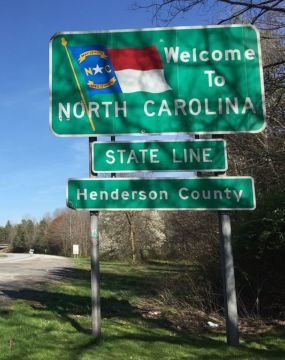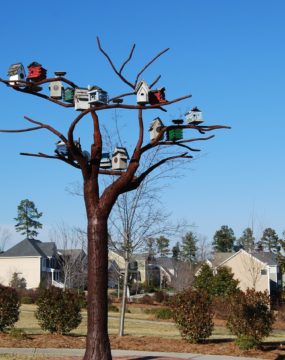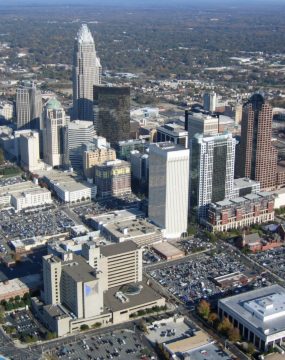Carolina Demographics
Keep up with our latest demographic insights

The percentage of the state’s total population not born in North Carolina continues to rise. Recent estimates from the American Community Survey indicate that 43% of the overall population is non-native, up 1 percentage point from previous five-year estimates when this share was 42%. This share is even higher among the adult population. Nearly half of all individuals 18 and older were born somewhere else and this group has grown faster than the population overall.…

New Geography recently reported on the extent of urban growth among the United States’ 53 major metropolitan areas (defined as having more than one million residents). Findings indicate that the majority of growth has taken place outside of the urban core, within the suburban and exurban regions of the metro area. North Carolina is home to two of these fifty-three major metropolitan areas: Charlotte and Raleigh. Using Wendell Cox’s City Sector Model, we explored the…

Migration is the main driver of North Carolina’s population growth. Three of every four new residents added to the state between July 1, 2016, and July 1, 2017, were from net migration, primarily from other states. (Note: individuals are classified as domestic or international migrants based on their country of prior residence, not on individual characteristics such as place of birth or citizenship status.) Between 2016 and 2017, the Census Bureau estimates that North Carolina…

Every decade, following the decennial Census, the 435 seats in the U.S. House of Representatives are allocated to the 50 states based on their population. After the 2000 Census, 12 House seats shifted between the states; another 12 seats shifted after the 2010 Census. Two years ago, we explored how ongoing population shifts might impact the reapportionment process following the 2020 Census. At that time, the most recent population estimates were for 2014. Today we…

North Carolina’s population grew to an estimated 10.3 million people as of July 1, 2017, according to new estimates from the U.S. Census Bureau. From July 1, 2016 to July 1, 2017, the state’s population increased by nearly 117,000 individuals. This number surpassed last year’s total population increase and marks the largest single year increase in the state’s population since 2010. Among the states, North Carolina had the 5th largest numeric increase since 2016. Only…

There is a newer version of this blog post available: North Carolina’s Hispanic Community: 2019 Snapshot Series note: This post and the next few in the series are the outgrowth of a presentation jointly developed with Dr. Krista M. Perreira and presented by Dr. Perreira to the October meeting of the North Carolina Governor’s Advisory Council on Hispanic/Latino Affairs. Terminology note: The U.S. Census Bureau introduced the term Hispanic in 1980 and this is a…

It’s hard to understand and process new information if we don’t have sufficient context and grounding in basic facts. A lot of what we do at Carolina Demography is help people understand the demographic facts at hand. The facts of interest are often very straightforward: how many people live in NC, where they live, how quickly populations are changing, etc. We make sure that individuals, organizations, and policy makers understand these basics so they can…

July 2015 to July 2016 was the largest year of population growth for the state of North Carolina for any single-year period since the last decennial Census (2010). This was also the case for 124 of North Carolina’s municipalities, including several with previously slim or even declining population growth. These places are labeled and represented by colored markers on the Story Map below. The table accompanying each point compares the numeric and percentage growth year-to-year…

In the next few months, the U.S. Census Bureau is releasing multiple data products that will provide new years of data, as well as some new detail not currently available. Here are the four most valuable updates for better understanding NC and its changing demographics: New county-to-county migration flow tables updated with 2011-15 data. The release of these tables and the update to the Census Flows Mapper web application will be the first time that non-overlapping…

Population can grow—or decline—from one of two components of change: net migration (both domestic and international) or natural growth (births and deaths). Both components have contributed to North Carolina’s population growth. Every year since 1980, North Carolina has had more births than deaths, meaning the population has grown from natural increase. The level of natural increase peaked in the late 2000s and has since declined significantly, reflecting the combined impact of fertility declines and population…
Your support is critical to our mission of measuring, understanding, and predicting population change and its impact. Donate to Carolina Demography today.